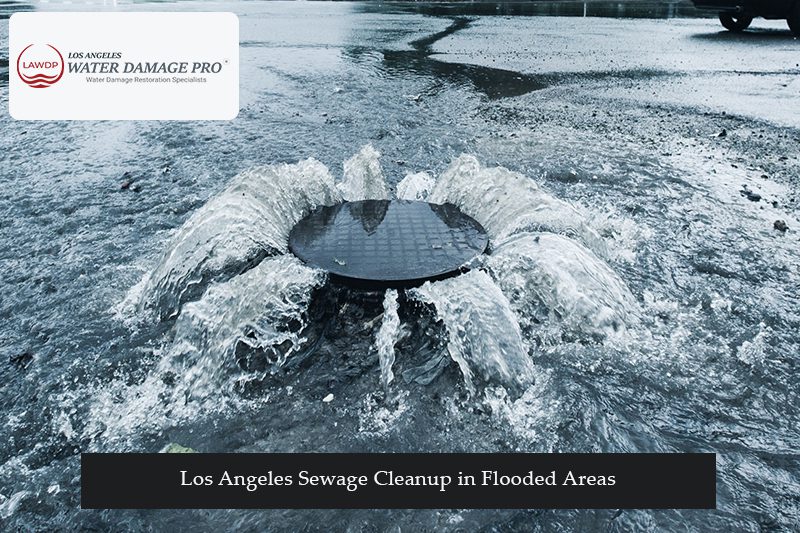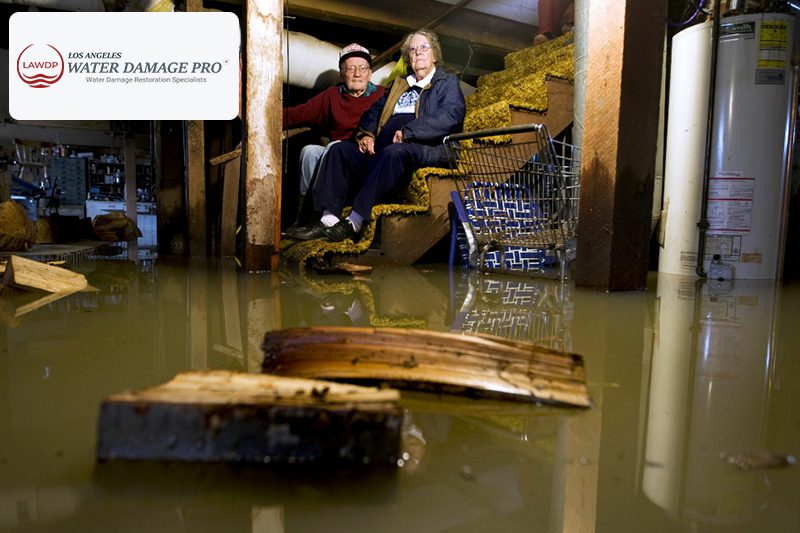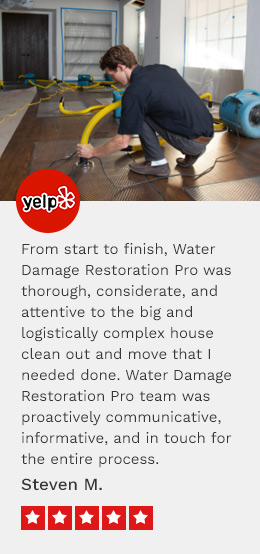Sewage Cleanup in Flooded Areas
Regarding sewage cleanup in flooded areas, Water Damage Restoration Pro is a trusted and reliable company, ready to tackle the challenging aftermath of sewage backups during floods. Heavy rains or other water-related emergencies can overwhelm sewage systems leading to the blockage of contaminated water and waste into residential and commercial properties.

Understanding the significance of a safe and clean living environment for those impacted by flooding, our team is committed to promptly assessing the damage’s extent, devising a customized plan based on the unique circumstances, and executing the cleanup process efficiently.
What Is Sewage Cleanup in Flooded Areas?
Sewage cleanup in flooded areas involves removing contaminated wastewater and sewage materials caused by a flood and mitigating the damage caused. The process includes assessing the damage, containment, and extraction of the sewage water, disinfection of affected surfaces, drying and dehumidification to prevent mold growth, and restoration of damaged structures.
Types of Flooded Areas Sewage Cleanup
| Types of Floods | Flooded Area Sewage Cleanup |
| Riverine Floods | The sewage cleanup process for riverine floods requires a comprehensive approach specifically targeting the unique challenge of contaminant composition like sediments associated with this type of flood. The process involves a safety assessment, water extraction, proper containment and disposal of sewage, cleaning and disinfection of surfaces, and drying with dehumidifiers to prevent mold growth. The final step is the restoration and repair of any damaged structures or belongings. |
| Flash floods | In areas affected by flash floods, the sewage cleanup process begins with assessing the extent of sewage contamination caused by the flash flood. Water extraction follows to remove contaminated standing water promptly. Contamination control measures are implemented to contain and isolate affected areas, preventing the further spread of harmful pathogens. Thorough sanitization and disinfection of surfaces, objects, and materials are conducted using specialized disinfectants. Odor neutralization techniques are employed to address unpleasant odors, followed by structural drying, and finally, any necessary repairs and restorations are undertaken |
| Ice Jam Floods | Sewage cleanup after Ice jam floods starts with assessing the extent of flooding and the risks associated with the ice jam. Before addressing the sewage cleanup, efforts may be made to break up the ice jam to restore the normal water flow. Contaminated water and sewage are extracted, followed by disinfection and sanitization of affected surfaces and areas. Finally, drying and dehumidification techniques are employed before repair and restoration. |
| Coastal Floods | For coastal floods, the sewage cleanup team evaluates the extent of the damage, especially by contaminants like saltwater and debris deposited on the sewage system. Containing and extracting the contaminated water, particularly addressing the impact of saltwater intrusion, is prioritized, and thorough disinfection and decontamination follow, targeting pollutants and pathogens brought in by the floodwaters. Odor control techniques are implemented to eliminate unpleasant smells; proper drying and moisture control techniques are applied to prevent mold and mildew growth. Structural repairs are finally done to ensure the sewage system’s resilience. |
| Urban Floods | In urban flood scenarios, sewage cleanup begins with a thorough safety assessment to identify immediate hazards like structural damage and electrical risks. Containing and draining the contaminated water is prioritized and specialized equipment is employed to prevent further spreading and cross-contamination. Extensive debris removal is conducted, then sanitization and disinfection are carried out, targeting affected surfaces, structures, and belongings to eliminate pathogens and odors. Structural drying and restoration follow, and preventive measures, such as enhancing sewage system capacity and promoting flood-resistant materials, are provided. |
Flooded Area Sewage Cleanup Insurance Claims
Dealing with sewage backups in flooded areas can be complex and stressful, especially when filing insurance claims. Water Damage Restoration Pro in Los Angeles has extensive experience handling sewage cleanup insurance claims. Our team prepares and submits a comprehensive claim, working as your advocate to communicate and negotiate with the insurance company.
Once your claim is approved, we proceed with the sewage cleanup and restoration process, coordinating with the insurance company to ensure timely reimbursement for the approved expenses. With our expertise and support, we aim to alleviate the stress associated with insurance claims, providing expert guidance and exceptional service.

Emergency Sewage Cleanup Services For Flooded Areas
Water Damage Restoration Pro provides emergency sewage cleanup services for flooded areas. Recognizing the pressing nature of sewage cleanup emergencies, we are accessible 24/7 and ready to respond promptly to your request for assistance. Our team is equipped with the necessary tools and expertise to handle sewage backups of any size, from minor residential incidents to large commercial disasters.
We strive to restore the affected areas to a safe and sanitary condition, prioritizing the health and safety of our clients and aiming to minimize the disruption caused by sewage backups. Trust Water Damage Restoration Pro for reliable emergency sewage cleanup services in Los Angeles during times of flooding.
Call Us at Water Damage Restoration Pro
If you need sewage cleanup services in flooded areas, don’t hesitate to contact Water Damage Restoration Pro. Our dedicated team is ready to respond promptly and restore your property to a safe and sanitary condition. Contact Water Damage Restoration Pro today to schedule immediate assistance and ensure a swift return to a habitable living environment.
FAQs
Sewage backups in flooded areas are commonly caused by overwhelmed sewage systems due to heavy rainfall, blockages in the sewer lines, or a combination of both.
The duration of sewage cleanup in flooded areas depends on various factors, such as the extent of the damage, the size of the affected area, and the complexity of the cleanup process.
In some cases, temporary evacuation may be necessary during sewage cleanup in flooded areas, especially if there are safety concerns or the property is uninhabitable.
In most cases, sewage cleanup professionals try to restore salvageable belongings. However, the restoration’s extent depends on the damage’s severity and the type of items affected.
Sewage cleanup should be done as soon as possible after a flood to minimize health risks, prevent further damage, and restore the affected area to a safe and sanitary condition.


